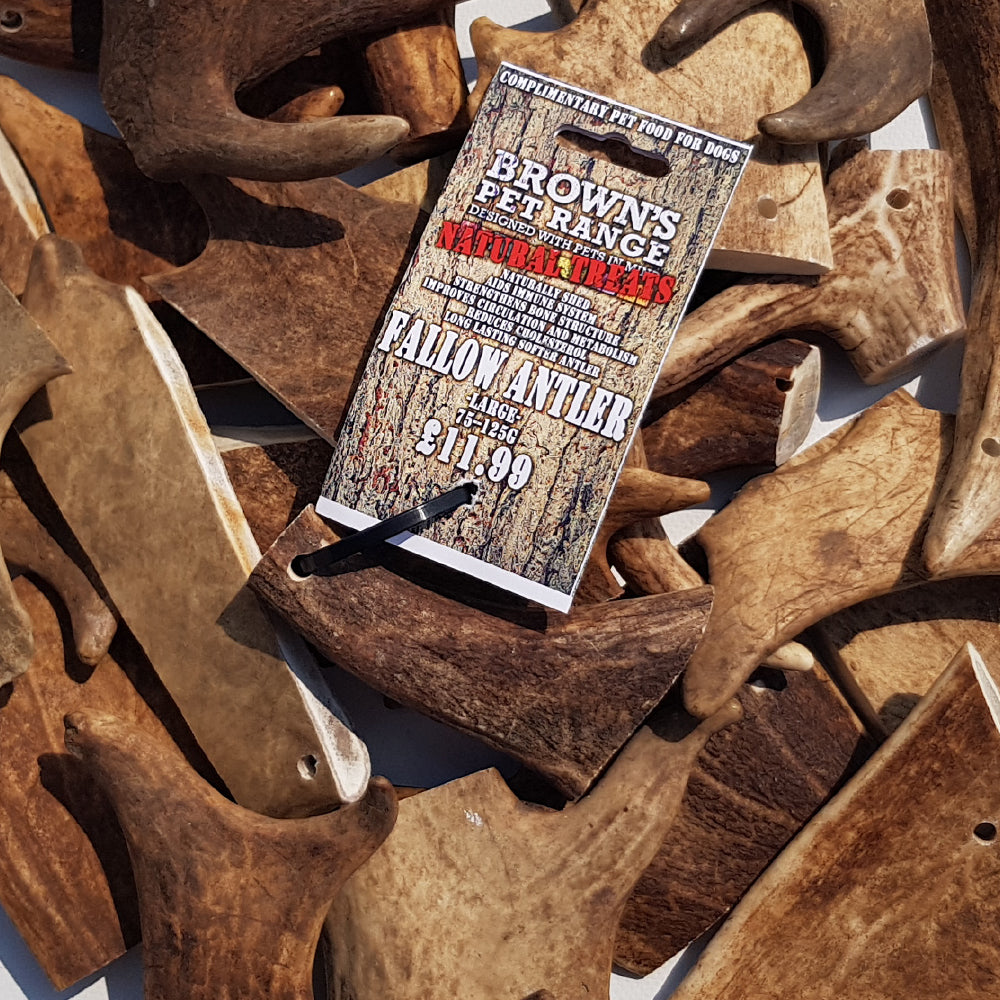
Naturally Shed Antler Chews
Share
Many people often wonder why deer shed their antlers and how do they end up as a Chew for their dog in their house? Well we hope to "shed" some light on some of these questions for you.
Deer (and other ungulates, like elk) shed their antlers every year, then grow a completely new set. This shedding procedure takes two to three weeks to complete, while the regeneration takes an entire summer to complete — before the cycle starts all over again. Bucks shed their antlers between January and April, depending upon many factors including the animal’s age and the latitude at which it lives, after the mating season concludes.

Antlers are made up of a honeycombed bone-like tissue. The mounting points on the heads of deer from which the antlers grow are called pedicles. The antlers break off (are shed) from these pedicles. Pedicles appear on a young deer's forehead during his first year. The next year, he will develop small shafts, and by year three the first "branch" will appear. As the deer matures, the antlers will lengthen and thicken and often develop additional branches. While in the growth phase, the antlers are covered in a soft membrane referred to as "velvet," a layer of skin that supplies the growing antlers with the nutrients needed to build the bone mass. This velvet contains many substances such as amino acids, minerals, proteins and Growth Factor-1 (a protein hormone similar in molecular structure to insulin).
The antlers will grow rapidly for two to four months. During the summer, higher levels of the male hormone testosterone slow antler growth, and the veins and arteries around the velvet constrict and cut off the blood and nutrient supply to the antlers. The velvet then withers and begins to fall off, a process facilitated by the deer by rubbing his antlers against trees. The whole process is repeated every year for the rest of his life.
As for the reason antlers are shed, it's due to a drop in testosterone following the rut. When a buck's testosterone levels fall, it causes a weakening in the tissue and bone at the antler base (pedicle) to the point where the antlers simply fall off. This process can happen quickly; antlers that are firmly attached one day can weaken and fall off within 24 to 48 hours. A buck in peak physical health will shed his antlers later than a weaker buck, and injured deer often shed their antlers early.
Fortunately for the deer, shedding antlers causes them no discomfort.
This is when the shed antlers are harvested, most notably Brown's Antlers are gathered from as far as the highlands in Scotland.
Once the Antlers have been gathered and reaches us here at Brown's they are hand cut, weighed and all edges are safely rubbed to avoid any sharp edges. After they have been divided up into sizes, they are then drilled by hand and tagged, transforming it into the product you see on the shelves and website.
Once the antler reaches you safely cut the tie and give it to your dog for hours and hours of chewing entertainment, with no mess!
- Safe Chewing Hints: When giving your dog an antler or any hard dog chew, we recommend the following: Supervise your dog. Do not allow your dog to consume more than 1/2" to 1" per day. If you need to get the antler away from your dog and he doesn't know "drop it", you can trade him for a tasty treat such as a piece of cheese.
Take a look at our Antler Chews for your dog...
